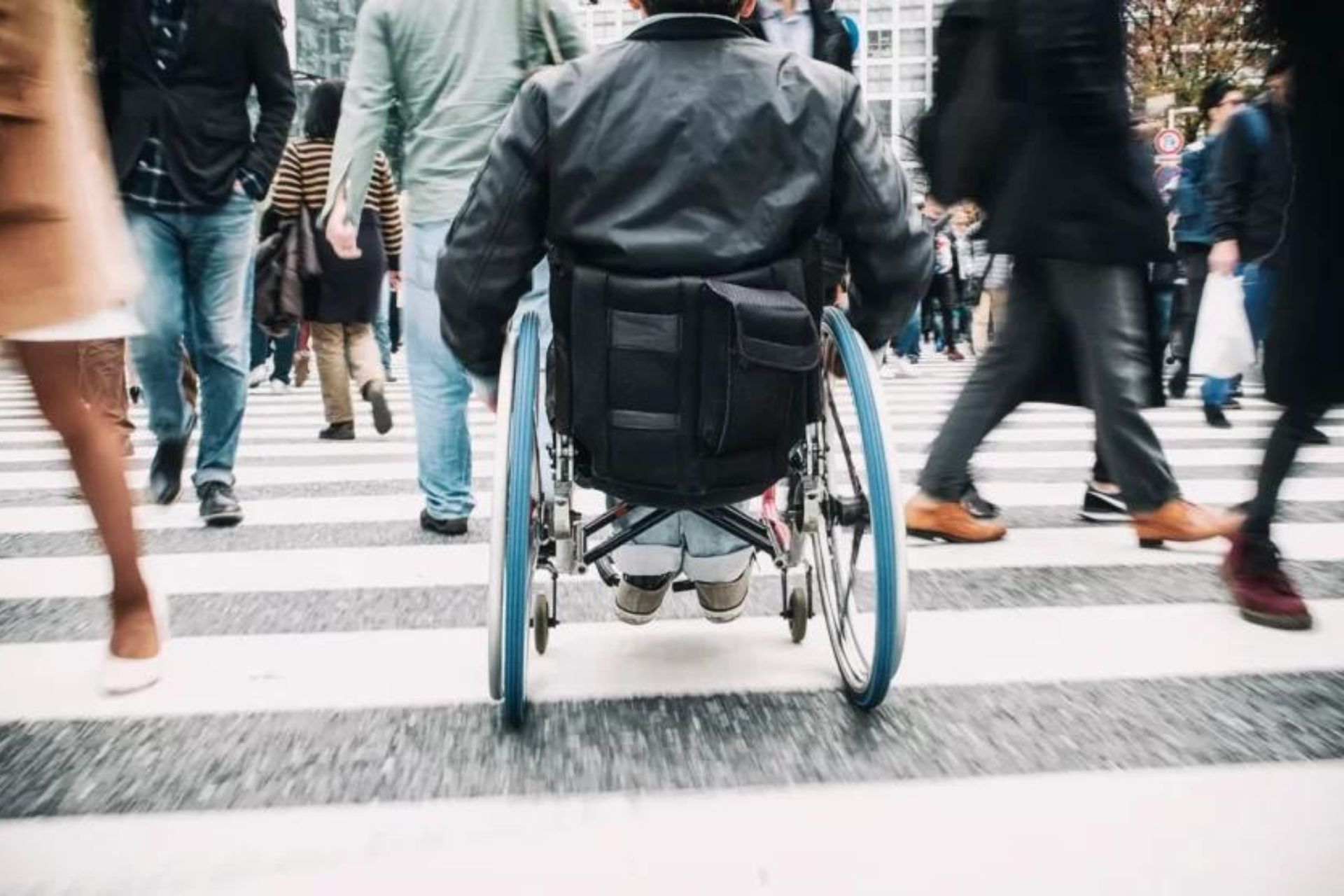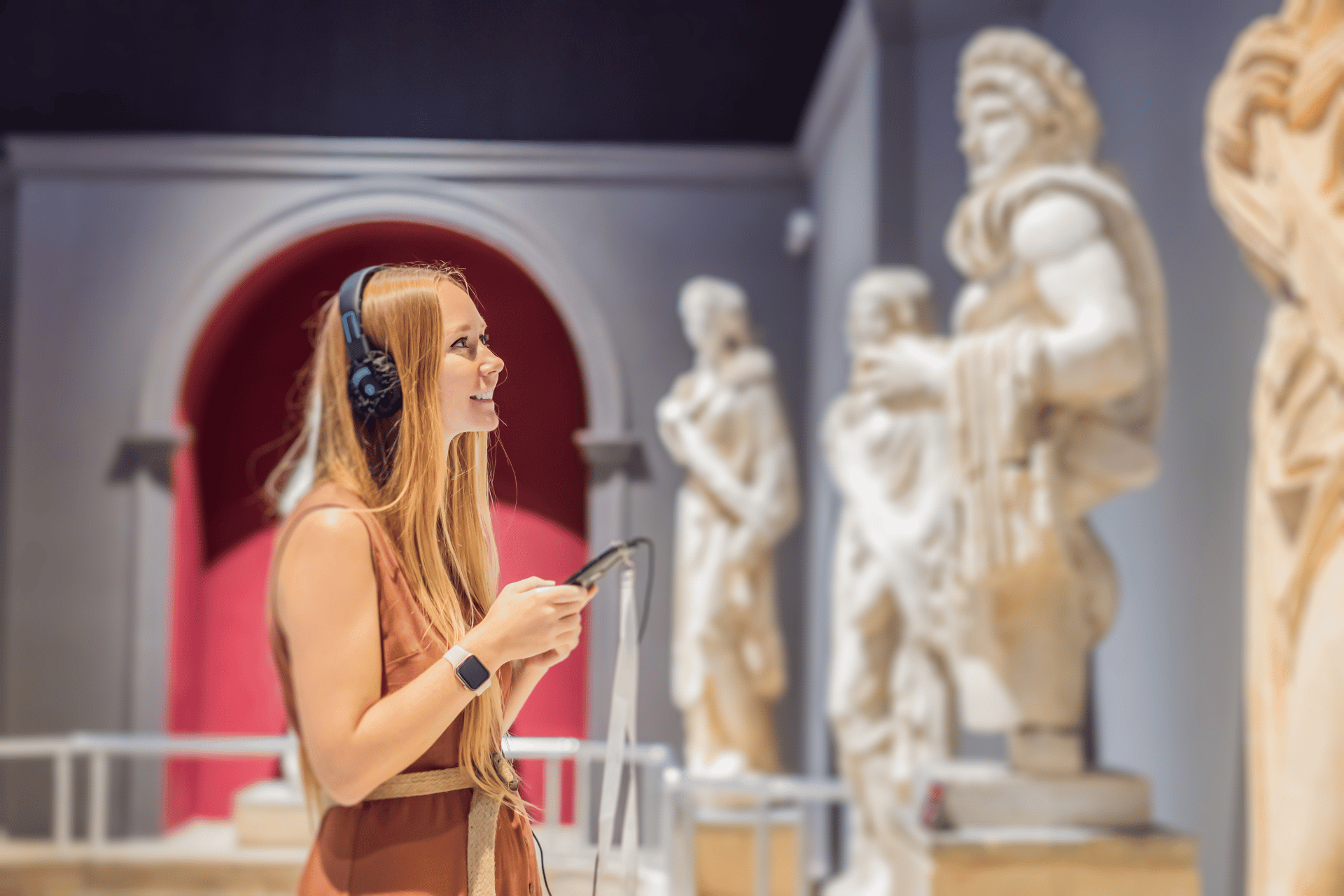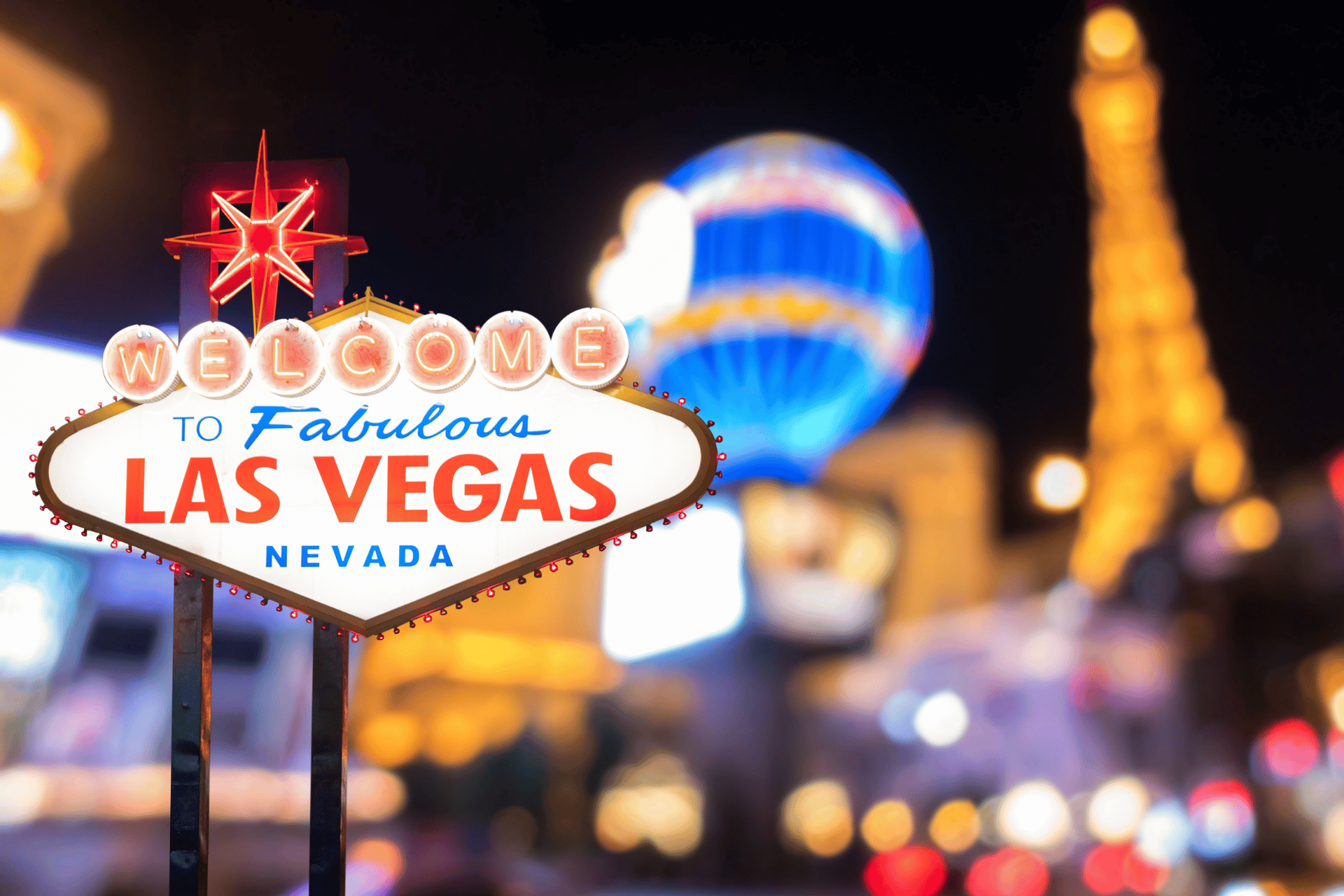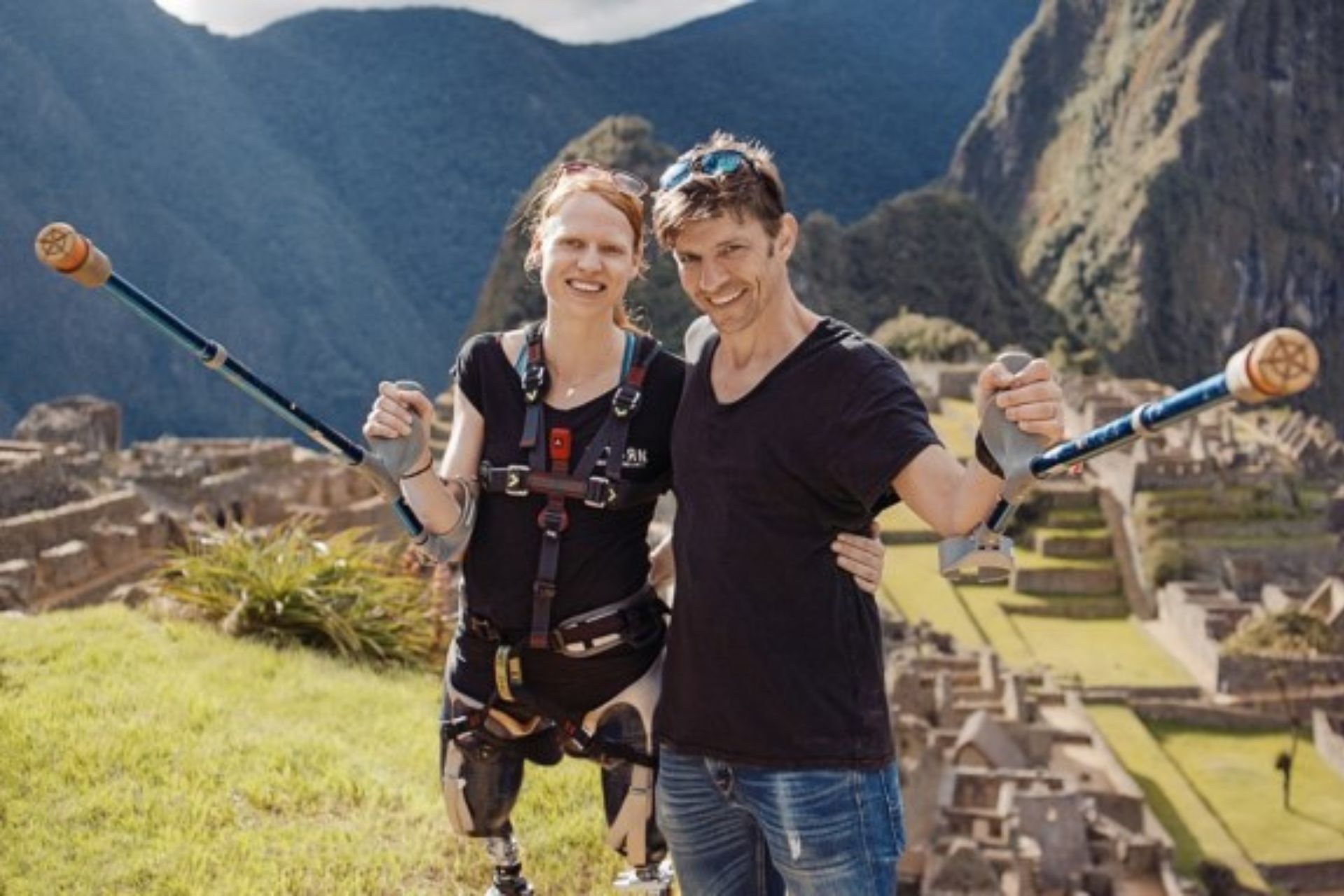Ten cities putting disabled travellers first

With one in six people living with disability, ensuring that cities around the world are accessible to all is vital. But which cities are doing it best, and how?
What do disabled travellers look for when choosing a city to visit?
This is important not only to those of us with disability, but also for cities themselves as they seek to tap into a large and growing accessible travel market.
A wide-ranging survey by the Valuable 500 of 3,500 PWD in five countries – the US, UK, Australia, China and Japan – around their travel habits and experiences provides invaluable insight into this question. The 2022 survey not only highlights the barriers to travel for people with disability (PWD), but respondents were also asked to nominate the cities they found most accessible and why, from which a top 10 was compiled.
The resulting data provides great understanding into what makes a city attractive to disabled travellers, from the range of accessible accommodation to the availability of accessibility information.
Here, we explore three of the top cities, explaining what makes them a good place for PWD to visit and bringing additional insights from knowledgeable residents and visitors.
Singapore: Leading the Way in Asia
Singapore truly is the gateway to Asia, not just because of its geographical location, but also because it’s such a cultural melting pot. Whatever you might think of the British Empire, it was responsible for the growth of Singapore from a settlement of a few hundred people to a bustling metropolis with a truly multicultural population – so much so that not only does Singapore have four official languages, multiracialism is actually enshrined in the constitution and continues to influence national policies and politics.
Accessibility Initiatives
At independence, Singapore also had in place a strong bureaucracy and rule of law, both of which contribute to it being the most disability-friendly city in Asia and among the most accessible cities in the world. Arguably, the main impetus for Singapore becoming so accessible is the longevity of its inhabitants. In order to allow for so-called ageing in place, which aligns with the values of the majority of Singaporeans, successive governments have committed to improving the accessibility of public infrastructure.
In fact, the city-state is one of a handful of jurisdictions in the world that has implemented a universal barrier-free accessibility code to cater for the needs not just of wheelchair users, but also people with vision or hearing loss or other disabilities. Its code, in place for 30 years, is continually being revised, with the most recent update in 2019 mandating improvements to the accessibility of older buildings undergoing renovation, the safety and accessibility of escalators and elevators, and the provision of accessible toilets at the entrance level of all buildings, as well as larger Changing Places–style toilets – equipped with a hoist and an adult-sized change table – on other floors.
Public Infrastructure
Since 2007, Singapore has had three five-year road maps detailing government aspirations to improve the lives of people with disabilities. The latest road map, the Enabling Masterplan 2030, was published in August 2022, with the government committing to all 29 recommendations to fulfil its vision of Singapore becoming an inclusive society by 2030. And because the government has taken the lead, private enterprise has followed.
The footpaths in the city are in excellent repair, with plenty of kerb cuts and TGSI to assist visually-impaired navigation. In a scheme that is unique in the world as far as we know, elderly and disabled residents are issued with a card that can be tapped at pedestrian crossings to give them extra time to cross roads. More than 95% of pedestrian walkways, taxi stands and bus shelters in Singapore are accessible to wheelchair users, the elderly and travellers with sensory disabilities.
95% of pedestrian walkways, taxi stands and bus shelters in Singapore are accessible to wheelchair users, older people and travellers with sensory disabilities. Singapore is one of a handful of jurisdictions in the world that has implemented a universal barrier-free accessibility code to cater for the needs not just of wheelchair users, but also people with vision or hearing loss or other disabilities.
Transportation
The Mass Rapid Transport System (MRT) is fully wheelchair accessible. Unlike in most mass transit systems around the world, wheelchair users are not reliant on ramps but are able to board the train independently – not just access, but equitable access.
All stations have a barrier-free route, as well as wheelchair-accessible toilets and wider fare gates. There’s tactile wayfinding, easy-to-follow signage, visual and audible indicators in lifts, on platforms, and on trains, and flashing red lights warn D/deaf users when train doors are closing. More than 85% of public buses are wheelchair accessible, while almost all bus stops are already barrier-free. Most cabs can store manual wheelchairs in their boot. Power wheelchairs would usually need to book a wheelchair-accessible taxi. Local ride-hailing app Grab also provides a service called Grab Assist, which offers additional assistance to seniors and wheelchair users.
Visit Singapore gives an overview of accessible public transport and some tourist attractions, but provision of information is where the city could definitely do more. The Disabled People’s Association of Singapore is probably a better resource, and includes links to many local disability-specific organisations, as well as a page dedicated to accessible Singapore for tourists. Unlike in most mass transit systems around the world, wheelchair users are not reliant on ramps but are able to board the train independently – not just access, but equitable access.
Tourist Attractions
One of Singapore’s major tourist attractions, Gardens by the Bay, a unique and enthralling complex of horticultural displays, is fully wheelchair-accessible. There’s a free shuttle service for wheelchair users and wheelchair rental for just $2 dollars per day – indicative of the increasing importance of intergenerational travel, particularly among Asian communities.
The city’s newest major attraction, a phenomenal architectural feat connecting the colonial-era City Hall and former Supreme Court to create the National Gallery, is a model of accessibility. It has a comprehensive, downloadable access guide – developed with the Disabled People’s Association of Singapore – which allows visitors to plan their visit and source information on the accessibility of specific exhibitions or festivals.
Las Vegas: Beyond The Glitz and Glamour
The primary drivers of Las Vegas’ economy are tourism, gaming and conventions – which in turn feed the retail and restaurant sectors – and it is this rather than the city’s 150,000 disabled inhabitants that have provided the incentive for it to become one of the most disabled- friendly cities in the US.
The importance of tourism to the city is explored in detail by the Las Vegas Convention and Visitors Authority in their 2019 report: tourism accounts for 20% of Las Vegas’ GDP, as compared with a national average of 6%, and garners the highest share of overall employment at almost 30%, which is double the national average; it is home to 14 of the world’s largest 25 hotels and 25 of the 50 largest.
As a tourist destination Las Vegas is the Strip – essentially a stretch of Las Vegas Boulevard South that’s lined with resort hotels and casinos. Since the Strip was built or renovated after the passing of the ADA in 1990, it is almost entirely ADA compliant, but the city’s hotels and venues go well beyond mere compliance.
Hotel Accommodations
The majority of hotels have pool hoists; some – like the Bellagio – have ceiling hoists in some of their rooms; many have movable hoists, visual and vibrating alarms, complementary wheelchairs and mobility scooters and, tellingly, a designated ADA specialist, as well as evacuation procedures for guests with disabilities – something that is shockingly often overlooked in many destinations.
But what’s startling about Las Vegas’ hotels is the sheer number of accessible rooms on offer. Some, like the Bellagio, offer dozens of accessible rooms, some offer hundreds – across all price brackets and room types, including Las Vegas’ famed themed rooms and suites.
Easy Movement on The Strip
The Strip is also a breeze to get around. Pavements are smooth, wide and well endowed with kerb cuts, and pedestrian crossings are equipped with visual and audio signals. There are about 20 elevated walkways to cross the Boulevard, all serviced by lifts.
All public transport is cheap and accessible. The Las Vegas monorail and private monorails operated by hotels are fully accessible, as are all local buses. A tram service connecting some hotels is accessible and free. The local bus company also runs a Paratransit service that operates 24/7; seniors and disabled passengers with certification from their home state pay reduced fares. Not only is there a large fleet of wheelchair-accessible taxis, Uber and Lyft both have a programme for passengers with mobility difficulties.
Naturally, casinos and showrooms are completely wheelchair accessible and equipped with assistive technology for D/deaf and hard of hearing visitors. In addition to lowered spaces for wheelchair users and people of short stature, casino personnel are trained to assist people with vision or hearing loss at the gaming tables; craps dealers will even place bets for those who need assistance. Bingo can be played using Braille or large-print cards or, for those with dexterity issues, using electronic machines. Some slot machines and table games are wheelchair accessible and others have movable chairs.
Many hotels offer free gaming schools to their guests, and sign language interpreters can be provided. Clearly, it pays for venues to go out of their way to be inclusive.
The city’s other main attractions are also accessible, including the High Roller Ferris Wheel (the tallest observation wheel in the world), hot-air ballooning and the SlotZilla Zip Line and Zoomline. It’s even possible to go go karting with hand controls. Two of the most famous Las Vegas attractions – the Fountains of Bellagio and the Fremont Street Experience – are not only accessible, they’re also free.
Challenges and Information Gap
Las Vegas doesn’t have everything going for it: some wheelchair users find the distances and the crowds difficult to manage, even within the hotels and casinos (with their carpets to boot). Perhaps because it is so accessible, the official Las Vegas visitor authority has absolutely no information on accessibility for visitors to the city. High-level information “for visitors with special needs” (questionable terminology) is hidden away on a Vegas Means Business website.
Sydney, Australia: An Accessible Jewel Down Under
With the iconic Opera House and Harbour Bridge dominating its beautiful harbour, Sydney must be one of the most recognisable cities in the world. Although not Australia’s capital, Sydney’s undoubtedly the country’s economic powerhouse and is rivalled only by Melbourne when it comes to its cultural and culinary influence on the world.
This vibrant, beautiful and dynamic city is a firm favourite with wheelchair users worldwide as the vast majority of its attractions are wheelchair-accessible and all new or renovated buildings must, by law, cater for wheelchair access. But the city’s accommodations for people with disabilities don’t stop with wheelchair users.
Legislation and Advocacy
While the USA has the Americans with Disabilities Act, Australia has its own Disability Discrimination Act (which celebrates its 30th birthday in 2022) to protect the rights of people with disability and to ensure they are treated fairly. This broad-ranging act covers everything, including access to public premises and the provision of goods, services and facilities – all things of great importance to tourists as well as residents.
Institutional Support
Australia also has a federal disability discrimination commissioner who enjoys a relatively high public profile, and a strong and active human rights commission. New South Wales, like other Australian states, has a Disability Council to advise the state government on all matters related to disability. To complement these rights- based protections, Australia has a well-developed building code with detailed the specifications relating to disabled access. The federal Disability Standards for Accessible Public Transport, introduced in 2002, is updated every five years. Of course, this doesn’t mean that access is perfect – far from it – but it does mean that there is a solid base and recourse for action when things aren’t working as they should. In terms of infrastructure, central districts and suburban centres are well endowed with kerb cuts and tactile surface indicators.
Accommodations and Cultural Hotspots
45% of respondents chose Sydney because of the wide variety of accessible accommodation close to cultural attractions, shops and restaurants. While some older buildings remain inaccessible to wheelchair users, most of the city’s historic National Trust properties are at least partially accessible. Similarly, while many restaurants and entertainment venues are wheelchair-accessible, a significant number have a single, annoying step at their entrance, and many lack an accessible toilet. The vast majority of Sydney’s main attractions, however, are accessible by wheelchair.
Innovations for the Vision-Impaired
What’s more, many of them are equipped with hearing loops and some can arrange (Australian) sign language interpreters. Blind and vision-impaired residents and visitors will benefit from the Legible Sydney Wayfinding System that links central Sydney streets using more than 2,100 tactile and Braille street signs, pedestrian-friendly maps, information pylons, new signs and digital technology.
This vibrant, beautiful and dynamic city is a firm favourite with wheelchair users worldwide as the vast majority of its attractions are wheelchair- accessible and all new or renovated buildings must, by law, cater for wheelchair access.
The tactile aluminium panels feature street names and building numbers in both Braille and large, raised lettering to allow touch-reading by people who are blind and close range reading for those with low vision. They have been placed next to push buttons at every signalised pedestrian crossing across the local area, replacing worn out rubber panels.
Airport and Transport Innovations
Also, in an Australian airport first, Sydney Airport launched a partnership with Aira, a service that enables blind and low-vision travellers to navigate the airport using their smartphone. Public transport is almost wholly accessible – albeit with assistance required from drivers, and with the notable exception of a few railway stations – with all relevant information on every form of public transport in the city provided by Transport New South Wales on their accessibility page.
Wheelchair-accessible taxis are plentiful and, if self-driving, even interstate or international disability parking permits can be used in one of Sydney’s many mobility parking spaces. Provision of information about accessibility – a key requirement for people with disability to plan their trip, as highlighted by survey responses from all regions – is where Sydney scores highly.
Accessible Information
In addition to the transport-specific information previously mentioned, the city’s destination management organisation hosts an Accessible Sydney site that’s full of useful information arranged thematically: museums and galleries; history and heritage; outdoors and wildlife; bucket-list attractions; and getting around.
Access needs
With such an influx of tourists with access needs, it pays local businesses to be more accessible. But familiarity with clients with disabilities also promotes a spirit of acceptance among host communities. A strong thread throughout surveys in all countries is the importance of being treated with respect, and how a greater understanding of disability and the needs of people with disabilities can be as important as accessible infrastructure. Understanding and empathy can’t remove physical barriers, but they can go a very long way towards mitigating them.
For a more detailed dive into the city’s accessibility features and initiatives, click here to read the full report.







